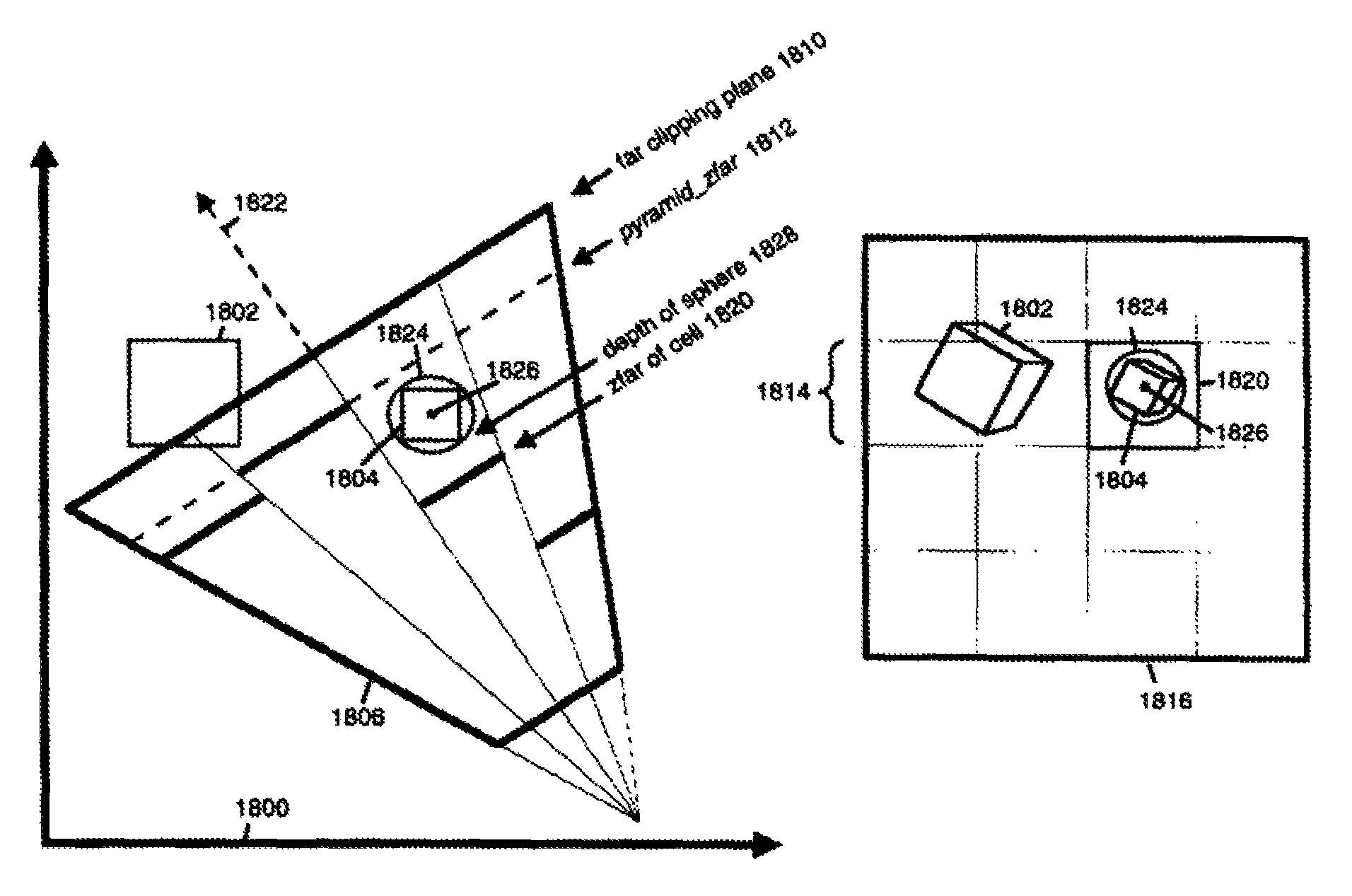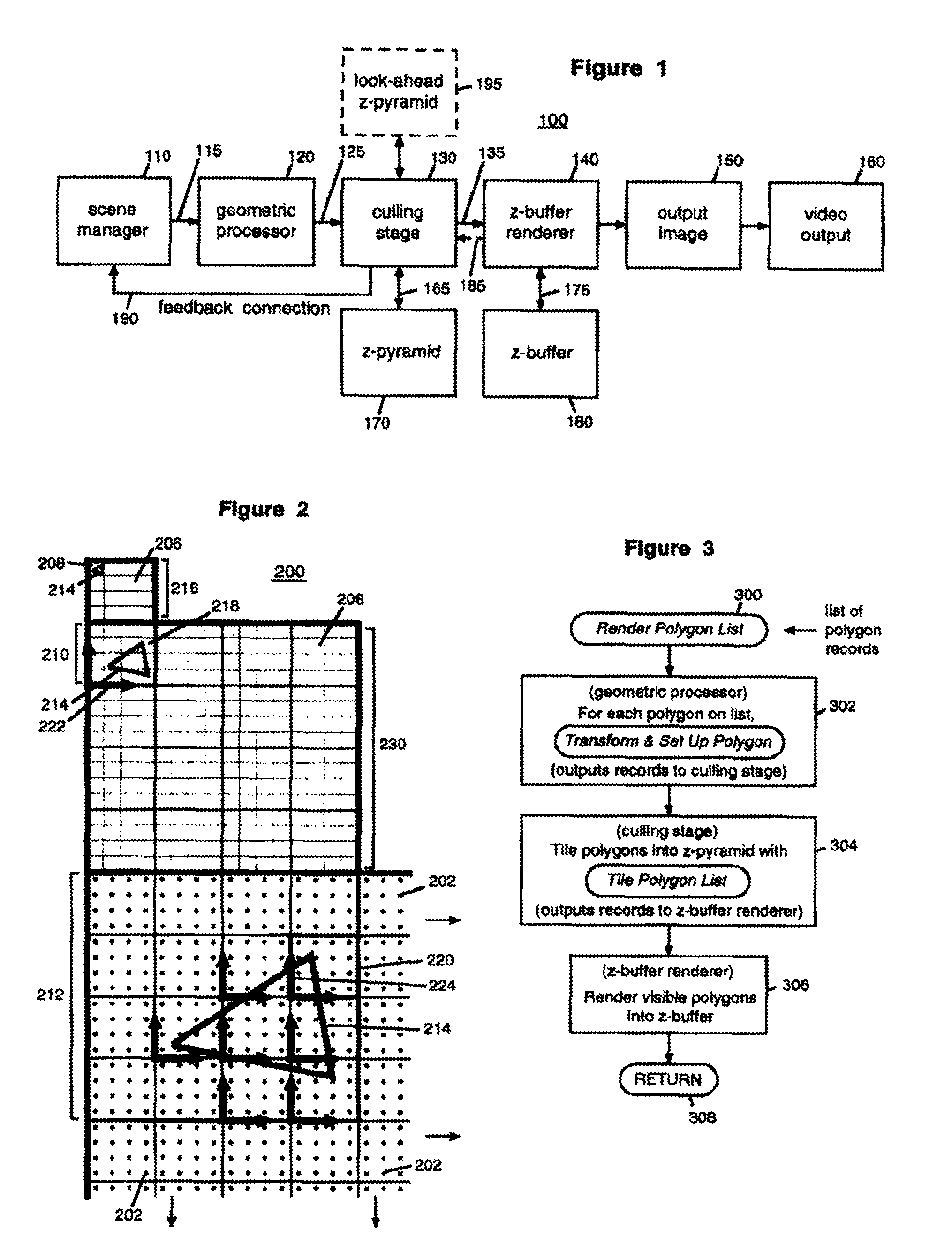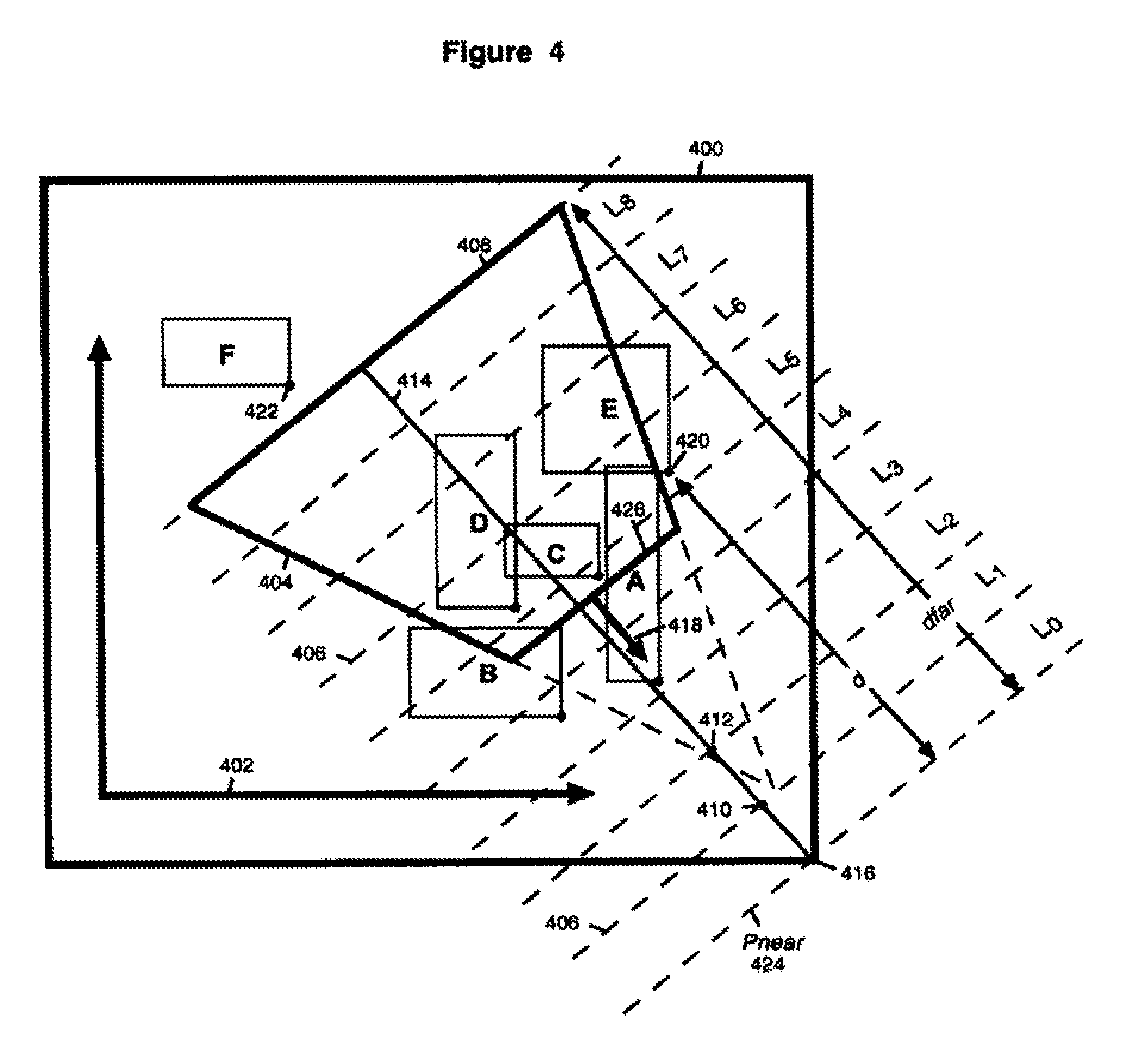System, method and computer program product for geometrically transforming geometric objects
a geometric object and computer program technology, applied in the field of computer graphics, can solve the problems of reducing the frame rate in approximate, affecting the processing speed of geometric objects, so as to reduce the amount of geometric and image information, improve performance, and reduce memory and bus traffic
- Summary
- Abstract
- Description
- Claims
- Application Information
AI Technical Summary
Benefits of technology
Problems solved by technology
Method used
Image
Examples
Embodiment Construction
[0075]One of the key features in the preferred embodiment is to separate culling of occluded geometry from rendering of visible geometry, so that culling operations are optimized independently. According to this feature, a separate culling stage in the graphics pipeline culls occluded geometry and passes visible geometry on to a rendering stage.
[0076]The culling stage maintains its own z-pyramid in which z-values are stored at low precision in order to reduce storage requirements and memory traffic. For example, z-values may be stored as 8-bit values instead of the customary 24-bit or 32-bit values.
[0077]Alternatively, occlusion information can be stored in novel data structures which require less storage than a z-pyramid consisting of arrays of z-values.
[0078]A second, independent method for reducing storage requirements and memory traffic is to use a low-resolution z-pyramid where each z-value in the finest level is a conservative zfar value for a group of image samples.
[0079]The ...
PUM
 Login to View More
Login to View More Abstract
Description
Claims
Application Information
 Login to View More
Login to View More - R&D
- Intellectual Property
- Life Sciences
- Materials
- Tech Scout
- Unparalleled Data Quality
- Higher Quality Content
- 60% Fewer Hallucinations
Browse by: Latest US Patents, China's latest patents, Technical Efficacy Thesaurus, Application Domain, Technology Topic, Popular Technical Reports.
© 2025 PatSnap. All rights reserved.Legal|Privacy policy|Modern Slavery Act Transparency Statement|Sitemap|About US| Contact US: help@patsnap.com



